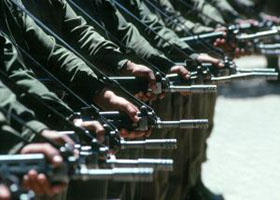


Despite what you have been told, the main impetus for SWFs is NOT just to manage foreign exchange reserves, diversify commodity rents or invest pension wealth. OK. I acknowledge that the funds will tell you that they exist for these reason (and a few more). But they really don’t. Ultimately, SWFs exist to insulate domestic economies from the external forces that might disrupt domestic plans or discount domestic institutions. A SWF can help protect against a commodity price collapse, a mortality improvement, a diminishing tax base, or even a currency crisis (among many other things). In theory at least, a sponsor wields its SWF as a buffer against the risks to autonomy and sovereignty in a global economy.
As such, SWFs arise out of growing international cooperation and greater integration of nation-states into the global economy. Indeed, in the past few decades, countries have been opening themselves up to these global forces like never before. Policymakers also increasingly recognize this opening as an unambiguous threat to their sovereignty and autonomy. And some political elites only engage in this cooperation and integration because they know that have a ready buffer against the external economic forces that might otherwise force convergence: the SWF. Though globalization and financialization offer much in the way of benefits (if they didn’t, why would anybody bother), they also sow many of the seeds of future crises. These crises threaten the domestic plans, institutions and agendas of those countries that have come to rely on global markets for their well-being.
And so, the rise of SWFs is necessarily a part of this give and take between states and markets, as government bureaucrats and policymakers use SWFs as tools for managing and even preventing imminent and future crises. In this way, SWFs are a form of self-insurance, a coping mechanism for dealing with the external uncertainties that come with joining global markets. SWFs offer policymakers a chance to make reliable and consistent plans in an environment that is increasingly subject to volatility and market-based short-termism.
So, with that brief explanation, let’s return to the main questions that motivated this entry. What role could SWFs play in stabilizing the MENA’s unstable political environment? Quick answer: Not much.
Given that these funds are about preserving the authority of the state and, to a certain extent, maintaining domestic institutions and norms, it is reasonable to suspect that these funds might thwart revolutionary forces and bolster the position of the state. However, as I see it, the funds only bolster the authority of the state against external forces (read markets, multilaterals or foreigners). So I don’t see how the leadership under threat can use these self-insurance policies for muting the current domestic uncertainty. Obviously, the political elites could potentially use the stored wealth to buy off the domestic populace. But, beyond that, I’m not sure how else these funds could be recruited to stop the current turmoil.
In fact, the existence of these stabilization funds may have unwittingly contributed to some of the current instability. How’s that? Well, they perpetuate domestic institutions and norms that might not prioritize policies focused on economic growth and job creation (specifically for young adults). By that I mean that without SWFs, the forces of globalization might have pushed these governments into difficult economic changes years ago, which could have prevented the current uprisings. But this is just one possible scenario among many, and it is not entirely sound (as Tunisia and Egypt, who both lack SWFs, show us).
While I don’t have all the answers, I hope you can at least see why I sat down to write this post. SWFs were set up as a buffer against unwanted influences and forces of the outside world. In some cases, this has been universally good, as, for example, smoothing volatile resource rents allows for long-term budget planning. However, the other side of the coin is that there may have been missed opportunities related to how global capitalist forces drive domestic reforms.
Anyway, I clearly still have some thinking to do on the subject. But if some of these ideas are of interest, check out this paper I wrote a while back.
This post originally appeared on the Oxford SWF Project website.
